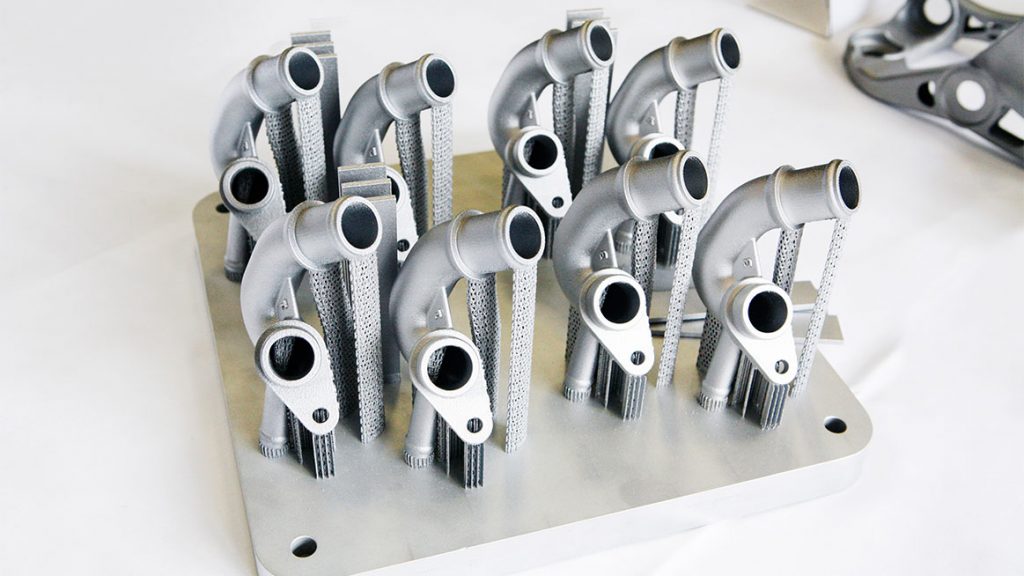Project leads at Volkswagen high end/luxury car brands Audi and Porsche are conducting research into the benefits of 3D printing for future car production. In addition to the effective application of FDM for prototyping and reducing tooling costs, researchers at Audi’s Competence Center in Ingolstadt, Germany, and Porsche are adding metal to Volkswagen’s additive manufacturing portfolio, and researching the potential of carbon fibre reinforcements.

3D printing efficient future cars
Counting the desktop 3D printers at Volkswagen Autoeuropa, the Volkswagen group in total, has 90 3D printers at 26 of its sites around the world.
At Volkswagen Osnabrück in Germany there is currently project to demonstrate the potential of weight reduction by using 3D printing. In one example use case, a reinforced A-pillar window support has been optimally redesigned to constitute fewer parts, and weighs 74% less than it’s traditionally manufactured counterpart.
With less weight, cars consume less fuel, providing better performance for the manufacturer and the customer.
For development and auto racing
Additionally, geometrically complex parts, with added features like conformal cooling channels, are particularly suited to the application of 3D printing. Knuth Walczak, Head of Innovation and Advance Development Management in the E Department at Porsche, explains, “3D printing is already saving tremendous amounts of time in terms of the very small lot sizes used in development and auto racing. Other strengths of the process include reducing weight and helping in areas where a component will take on additional jobs like cooling or air flow.”
“No direct weakness is created in material properties.”
“Even highly stressed parts like pistons can be printed. Because the material is laid layer upon layer, you can systematically affect the microstructure. The mechanical properties differ significantly from those of conventionally produced parts.”
Metal parts on demand
In May 2017 Volkswagen revealed details of a pilot 3D printed spare parts initiative. Starting with a small corrado part, the program now seems to have progressed to the production of parts for exclusive and special car models.
At Porsche Alexander Schmid, a member of After Sales and Sales at AUDI AG, comments, “Reproduction on demand is a vision for us. In the future, we will be able to economically and sustainably ensure supply with fewer original replacement parts. Regional printing centers will simplify logistics and warehousing operations.”

Manufacturing in unison
Though 3D printing is reaching new applications in manufacturing, Volkswagen representatives remain realistic about its potential.
Jörg Spindler, Head of Equipment and Metal Forming at the Audi Competence Center, comments, “Today, 3D printing pays off when you make up to 200 units throughout the life cycle of a product. With the help of optimization in process and plant engineering, we will be able to reach cost effectiveness at a level of 3,000.”
“Carbon-fiber-reinforced polymer didn’t knock steel sheets out of the game. Rather, it created new possibilities,”
“Metallic 3D printing is also not a competing process in mass production. But it will certainly lead to significant progress in some sub-areas.”
For more of the latest 3D printing in automotive subscribe to our free 3D Printing Industry newsletter, follow us on Twitter, and like us on Facebook.
Featured image shows Jörg Spindler Head of Equipment and Metal Forming at the Audi Competence Center. Photo via Volkswagen AG



